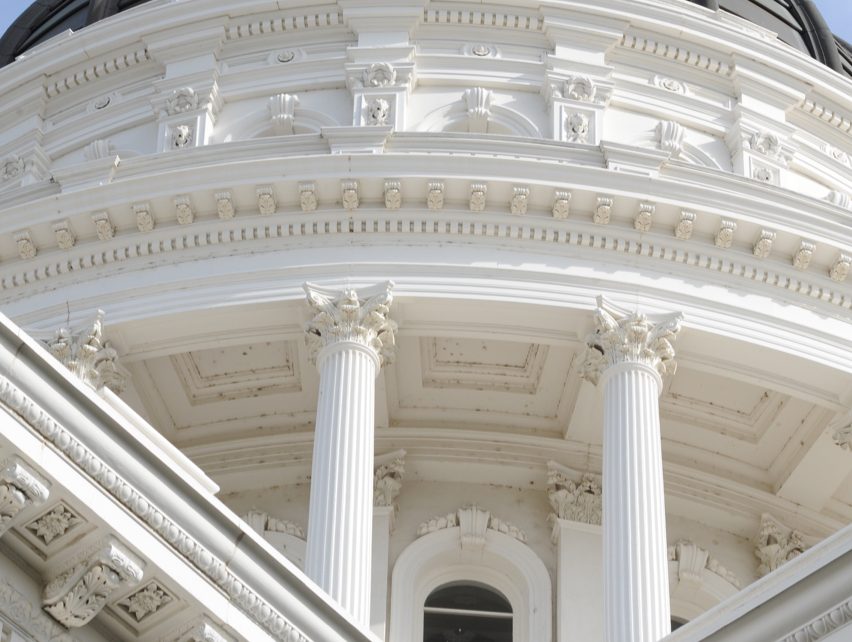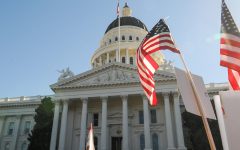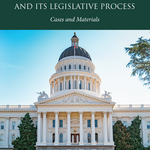
State Capitol. (Photo: Kevin Sanders for California Globe)
Globe Quiz on California Rulemaking Process
T or F: An emergency rulemaking requires a minimum 10-day comment period
By Chris Micheli, April 27, 2023 6:34 am
This quiz is to test your knowledge about California’s Rulemaking Process.
- The main principles of the California’s Administrative Procedure Act (APA) are notice to the public and opportunity to be heard.
- An underground regulation is one that has complied with the APA process.
- The state APA dictates the process to be followed by state agencies in their rulemaking.
- There are seven statutory criteria by which OAL evaluates proposed regulations.
- Like a bill signed by the Governor, after review and approval by OAL of a regulation, OAL transmits the regulation to the Secretary of State.
- Deference is one of the statutory standards of review used by OAL to review proposed regulations.
- Any interested person may petition a state agency requesting the adoption, amendment, or repeal of a regulation.
- All agencies in the judicial or legislative branches of the state government are exempt from the APA.
- A “major regulation” is one that is estimated to have an economic impact in excess of $100 million, as estimated by the rulemaking agency.
- A regulation or an order of repeal required to be filed with the Secretary of State becomes effective on a quarterly basis.
- Proposed regulations are published in the California Code of Regulations.
- The publication of a regulation in the California Code of Regulations or California Code of Regulations Supplement raises a conclusive presumption that the text of the regulation as so published is the text of the regulation adopted.
- A regular rulemaking requires a minimum 45-day comment period.
- An emergency rulemaking requires a minimum 10-day comment period.
- An emergency regulation must contain a finding of an emergency that includes a written statement that contains required information.
- A finding of emergency can be based on just expediency or general public need.
- Agency publication of an ISOR and FSOR are part of the rulemaking process.
- A regular rulemaking project must be completed within one year.
- An agency does not have to hold a public hearing on a proposed regular rulemaking project.
- Necessity, authority, clarity, consistency, reference, nonduplication, fairness, and economical are the statutory standards of review used by the OAL to evaluate proposed regulations.
- The Department of Finance reviews the Standardized Regulatory Impact Analysis prepared by a rulemaking agency.
- An appeal of an OAL decision regarding a regulation can be appealed to the Governor’s Office.
- If requested by an individual legislator, a state agency must undertake a review of a regulation or group of regulations.
- Only those parties that participated in a regular rulemaking project may bring a suit for judicial review of a regulation.
- An agency can be exempted from complying with the APA by adopting a regulation after public hearing.
How did you do? The following are the answers:
- True
- False – an “underground regulation” is one that did not follow the required process pursuant to the APA.
- True – as set forth in the Government Code.
- False – there are six statutory standards.
- True – this is a ministerial act.
- False – this is not one of the six standards of review used by OAL.
- True – this is permitted under the APA.
- True – this exemption is found in the APA.
- False – the amount is $50 million.
- True – so long as the regulation is filed at least one month before the quarterly date.
- False – the CCR is where finalized regulations are published.
- False – it creates a rebuttable presumption.
- True – as provided for in the APA.
- False – it is a minimum 5-day comment period.
- True – this requirement is found in the APA.
- False – a finding of emergency based only upon expediency, convenience, best interest, general public need, or speculation, shall not be adequate to demonstrate the existence of an emergency.
- True – they are the Initial Statement of Reasons and the Final Statement of Reasons.
- True – the one year begins at the time of the notice of proposed rulemaking.
- False – if any interested person requests a public hearing, the agency must hold one.
- False – the first six listed are the actual standards used by OAL.
- True – DOF is required to do so “from time to time.”
- True – the appeal is specifically made to the Governor’s Legal Affairs Secretary.
- False – OAL, at the request of any standing, select, or joint committee of the Legislature, shall initiate a priority review of any regulation, group of regulations, or series of regulations that the committee believes does not meet the standards set forth in the APA.
- False – any interested party may do so.
- False – an agency can only be exempted from the APA by an enacted statute.
Latest posts by Chris Micheli (see all)
- Third Quiz on Where Areas of Law Are Found in the California Codes - December 30, 2025
- Management of Unclaimed Property - December 30, 2025
- Petitions and Responses in Arbitration - December 29, 2025





2 thoughts on “Globe Quiz on California Rulemaking Process”